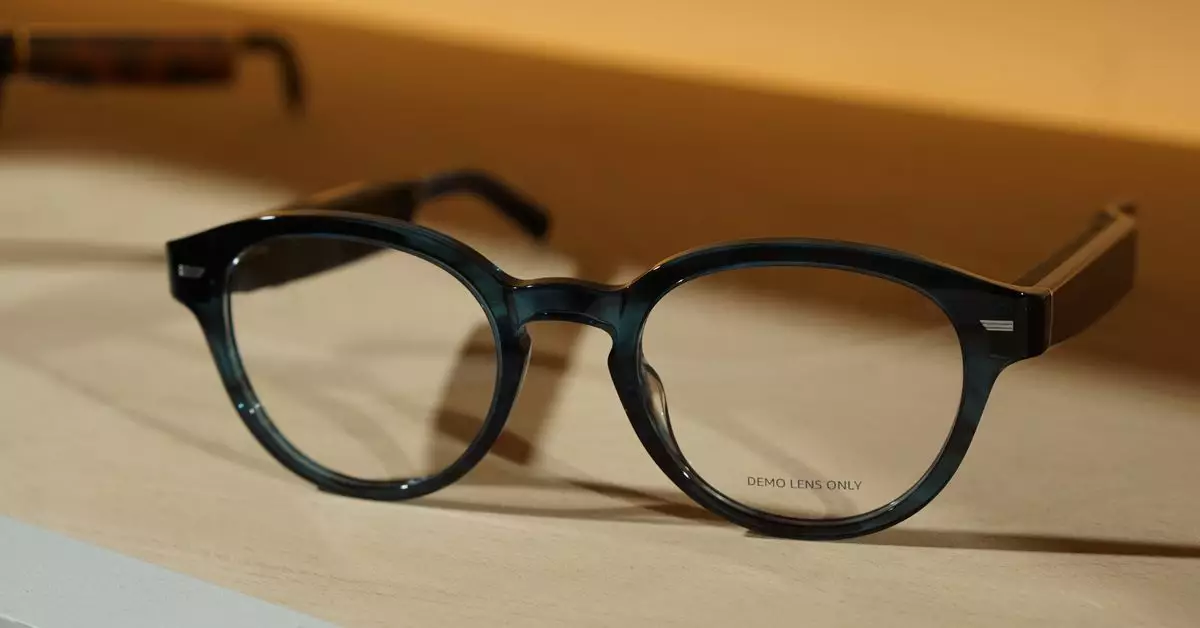In the rapidly evolving landscape of wearable technology, Amazon is making headlines with its ambitious plan to develop a prototype of smart glasses specifically geared towards improving delivery efficiency. As reported by industry insiders, these innovative glasses aim to provide delivery drivers with hands-free turn-by-turn navigation, ultimately optimizing their delivery routes. This initiative, codenamed “Amelia,” is a notable shift from traditional wearable technology that has struggled to capture consumer interest. With an eye on efficiency in the final stretch of deliveries, Amazon is seeking to revolutionize the way packages are delivered.
The proposed smart glasses are built on the existing Echo Frames platform, but they represent a significant technological advancement with the potential inclusion of an embedded display. Unlike their audio-only counterparts, the Amelia glasses would not only guide the wearer verbally but visually, with clear directional prompts that could enhance navigation through complex building environments or busy streets. This feature is expected to minimize delivery time, allowing drivers to take on more packages during a shift, thereby increasing productivity.
Moreover, the glasses are rumored to offer integrated camera capabilities. This inclusion would facilitate real-time photographic evidence of package deliveries, addressing the growing consumer demand for accountability and proof—especially in an era where package theft and delivery disputes are prevalent. By embracing these technological features, Amazon is not merely improving conveniences but enhancing overall service quality.
Despite the promising prospects of the Amelia project, Amazon faces formidable challenges in transforming this vision into reality. One significant hurdle is developing a lightweight and efficient battery that can sustain an entire eight-hour work shift. The balance between battery longevity and comfort is critical, as any bulky or heavy design could deter drivers from using the glasses consistently.
Furthermore, many potential users already rely on corrective lenses, and thus far, smart glasses have struggled to accommodate various prescriptions. This particular challenge represents both a technological and market dilemma. As with any new gadget, user adoption is contingent upon meeting existing consumer needs. If Amazon aims to make these glasses widely used, accommodating the prescription needs of its drivers is non-negotiable.
Amazon’s ambition to innovate with smart glasses for delivery does not occur in a vacuum. This endeavor circles back to the broader narrative of how tech companies have attempted to exploit the augmented reality (AR) market. The previous underperformance of consumer-targeted smart glasses from companies like Google and Microsoft suggests that the pivot toward enterprise applications may be a more sustainable approach for Amazon.
Sources report that the last generation of Echo Frames saw disappointing sales, which further underlines the necessity for Amazon to find alternative markets. Focusing on enterprise needs, such as those of their delivery workforce, allows the company not only to refine its technology but also to create a dependable revenue stream. Evidence from previous ventures into AR technology indicates that corporate solutions often yield better financial returns than consumer sales, thereby validating this strategic pivot.
Another intriguing aspect to consider is the potential for external partnerships. While the initial focus may lie within Amazon’s delivery framework, the adaptability of the underlying technology could pave the way for third-party contracts in the future. This could enhance Amazon’s competitive edge, enabling it to supply delivery solutions beyond its own operations.
As Amazon forays into the realm of smart glasses, many questions remain. The successful realization of their Amelia project hinges on overcoming significant technological barriers and fostering acceptance among drivers, a majority of whom are independent contractors. While the speculation surrounding these glasses generates buzz, it’s critical to recognize that practical application may still be years away.
In retrospect, Amazon’s exploration of smart glasses is more than just a product development venture; it’s an illustration of how technology and daily operations can evolve through innovative thinking. Whether the technology will prove beneficial to both Amazon and its delivery workforce remains to be seen, but it certainly signals a forward-thinking approach in a market that desperately seeks transformation. If successful, Amazon could indeed redefine the standards for delivery operations, creating a smarter, more efficient future.

